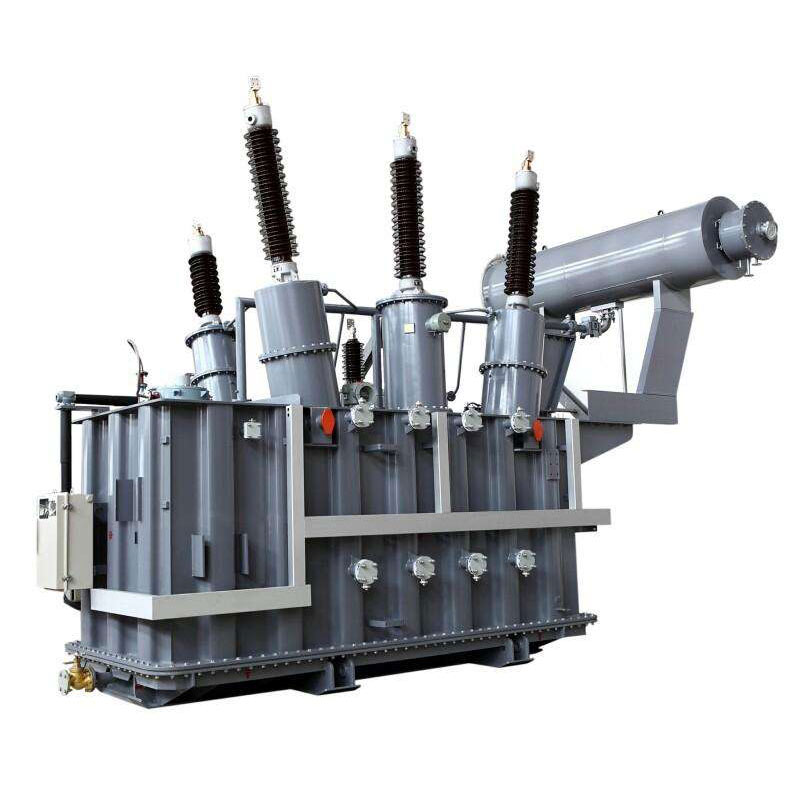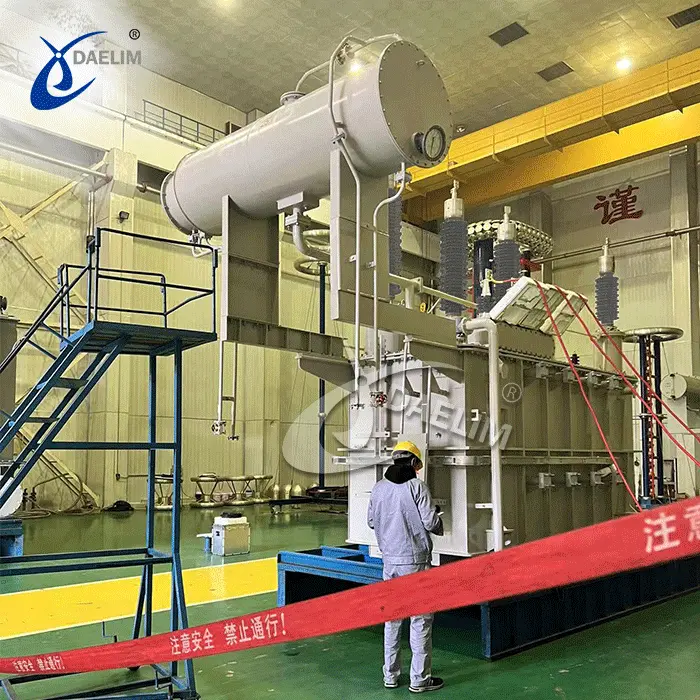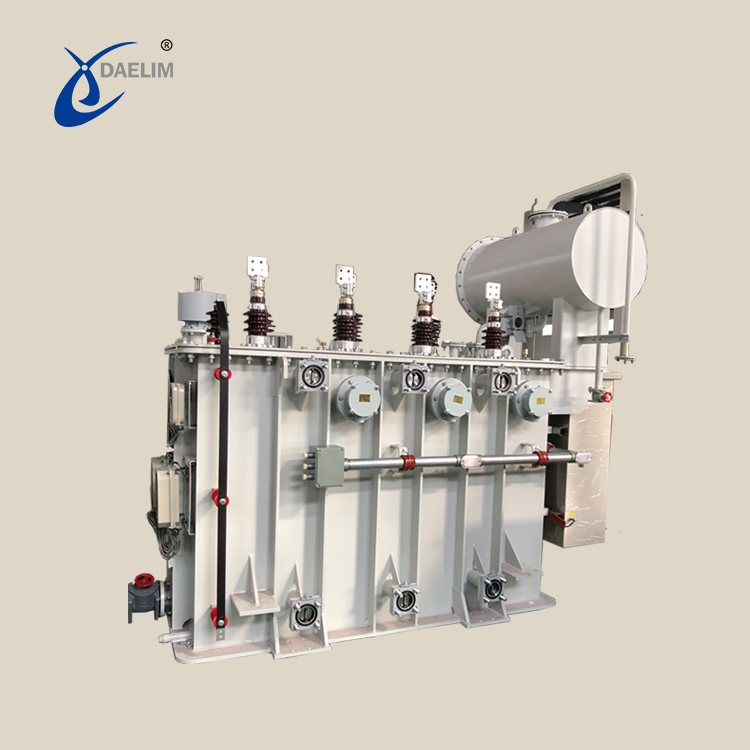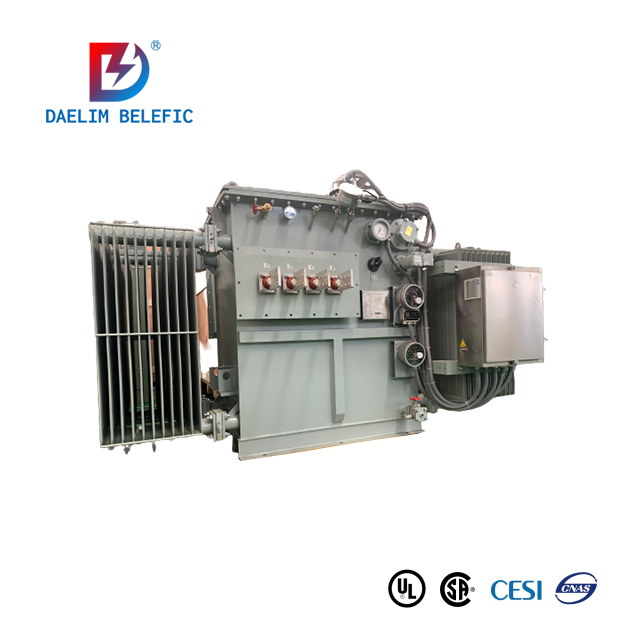The Ultimate FAQs Guid To Oil Type Transformer
There are different varieties of transformers in the market right now that serve different purposes. From dry-type to oil-type, the options for what kind of transformer you use in your facility are aplenty.
But when it comes to oil-type transformers, there are some key things you need to know before deciding whether or not they're the right choice for you. Oil-type transformers differ from other variants as they rely on oil to fulfill an important role in their overall functioning and longevity.

At Daelim, we're transformer experts and here to help you make the best decision for your facility. But, just like our drive to provide the best quality transformers, we also want to spread nothing but the most accurate information about them.
This article will discuss everything you need to know about oil-type transformers. To help you better understand oil-type transformers, we've compiled a list of answers to some of the most frequently asked questions about them.

What is an Oil Type Transformer?
An oil-type transformer is a kind of transformer that uses oil as a cooling and insulating medium. The core and coils of an oil-type transformer are immersed in oil, which helps to cool the transformer and provides insulation.
Oil-type transformers circulate through ducts in the coils and around the core assembly. The movement of oil is caused by convection generated by the heat produced by the transformer.
Oil-type transformers are widely used in power distribution and electrical substations because they cool the transformer efficiently. Additionally, oil-type transformers have a longer lifespan than other transformers and require less maintenance.
Learn more: 110 kV Oil Filled Power Transformer
You should consider getting an oil-type transformer if you fall under one of the following categories:
- If you're looking for a transformer with a long lifespan, so you don't have to replace it anytime soon
- You need a transformer that can withstand high temperatures and won't overheat easily.
- If you need a transformer that can efficiently cool itself without any external help
- If you want a transformer that requires little to no maintenance so that you can save on maintenance costs
- If you have a large substation that needs a powerful transformer that can handle a lot of electricity
- If you want to use a transformer for commercial purposes so that it can withstand more wear and tear.
What Are the Advantages and Disadvantages of Using an Oil Cooled Transformer?
An oil transformer offers a lot of advantages that make it an enticing option when it comes to selecting a transformer. But at the same time, it also has its fair share of disadvantages that outweigh the pros and cons of using an oil-cooled transformer.
Try for free: The ultimate guide to ONAN transformers
Knowing and understanding the advantages and disadvantages is important before deciding whether to use an oil-cooled transformer. That way, you can make an informed decision that is best for your needs and requirements. With that said, here are the advantages and disadvantages of using an oil-cooled transformer:
Advantages of Using an Oil-Cooled Transformer
Effective and Efficient Cooling
As the name implies, oil-cooled transformers use insulating oil to cool the transformer. The oil in oil-cooled transformers effectively cools the transformer because it has a high heat capacity. This means that the oil can absorb a large amount of heat before it gets hotter.
The oil used in oil-cooled transformers also has a high thermal conductivity. As a result, the oil can efficiently transfer heat from the transformer to the surrounding air. These two properties make oil an effective and efficient cooling agent for transformers. 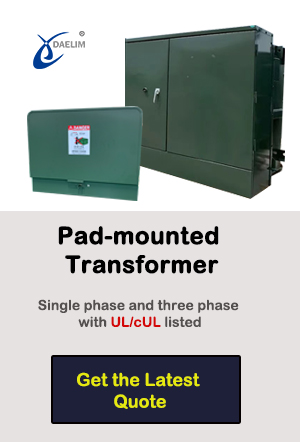
Reading more: Transformer Efficiency: The Ultimate FAQs Guide
Safe and Reliable
Oil-cooled transformers are also safe and reliable to use. This is because the oil used in these transformers is non-flammable and has a high flash point. This means that the oil will not catch fire easily and is less likely to cause an explosion.
In addition, oil-cooled transformers are also less likely to fail than other types of transformers. This is because the oil used in these transformers acts as a shock absorber that cushions the components of the transformer in case of an electrical fault.
Long Lifespan
Another advantage of using an oil-cooled transformer is its long lifespan. This is because the oil used in these transformers acts as a lubricant that reduces friction between the moving parts of the transformer.
The oil also protects the transformer from corrosion and rust. This means oil-cooled transformers are less likely to experience premature failure due to corrosion or rust.
Durable
Oil-cooled transformers, especially the ones manufactured by Daelim, are also durable and can withstand a lot of wear and tear. This is because the oil used in these transformers acts as a sealant that prevents water and other contaminants from entering the transformer.
The oil used in oil-cooled transformers also has a high viscosity. This means that the oil will not leak easily from the transformer. That way, you can be sure that your transformer will not develop any leaks even after years of use.
Best Option for High Voltage Applications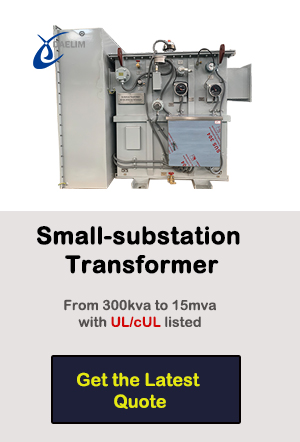
Oil-cooled transformers are also the best option for high-voltage applications. This is because the oil used in these transformers can withstand high voltages without breaking down.
Oil-cooled transformers are also less likely to experience a dielectric breakdown. This means that these transformers can safely handle high voltage without the risk of failure. As a result, oil-cooled transformers are the preferred choice for high-voltage applications.
Get it now: Different Transformer Types and Their Applications
Disadvantages of Using an Oil-Cooled Transformer
High Initial Cost
One of the main disadvantages of using an oil-filled transformer is its high initial cost. This is because oil-cooled transformers are more complex and require more materials than other transformers.
Oil Type Transformer needs to have oil-removing pits and accident oil pools when installing. When a fuel injection or explosion occurs, the oil of the transformer will be unloaded to the oil-removing pit and then flows to the accident oil pool. Avoid greater losses due to the spread of transformer explosion fires.
As a result, oil-cooled transformers are more expensive to manufacture. However, their long lifespan and durability offset the high initial cost of oil-cooled transformers.
Requires Regular Maintenance
Another disadvantage of using an oil-cooled transformer is that it requires regular maintenance. This is because the oil used in these transformers needs to be replaced regularly.
Oil-cooled transformers also need to be cleaned regularly to prevent the build-up of dirt and debris. As a result, oil-cooled transformers require more maintenance than other transformers.
Highly Flammable
Since oil is the main cooling agent used in oil-cooled transformers, these transformers are highly flammable. If an oil-filled power transformer catches fire, it can cause much damage. That's why oil-cooled transformers need to be installed in areas where there is no risk of fire.
That said, oil-cooled transformers are equipped with safety features that prevent them from catching fire easily. So, you don't need to worry about the safety of oil-cooled transformers as long as they are installed and used correctly.
Dirty Environment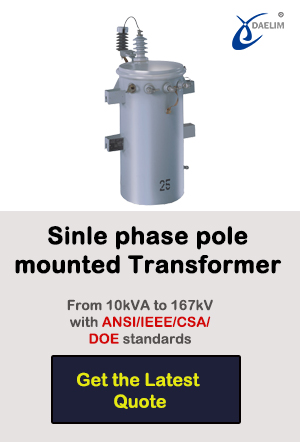
Another disadvantage of using an oil-cooled transformer is that it creates a dirty environment. This is because the oil used in these transformers can leak and cause contamination. That's why this type of transformer requires high maintenance.
Oil-cooled transformers also produce a lot of heat when they are in use. As a result, oil-cooled transformers can make the environment around them very hot and uncomfortable.
Daelim Transformer can provide environmentally friendly vegetable oil as transformer oil. Plant oil has environmental protection, fire prevention, and high characteristics. Therefore, you don't have to worry about the environmental pollution problem caused by the transformer.
Read my article on: What is the difference between mineral oil and vegetable oil?
Not Suitable for Indoors
Because they can easily catch fire and produce a lot of heat, oil-cooled transformers are unsuitable for indoor use. That's why these transformers are mostly used in industrial applications.
If you need to use an oil-cooled transformer indoors, ensure the area is well-ventilated and there is no fire risk. That way, you can use an oil-cooled transformer safely indoors.
Where Are Oil-Type Transformers Used?
Oil-cooled transformers are mostly used in industrial applications. This is because these transformers can handle high voltages and don't require much maintenance.
You may enjoy: Basic Guide To High Voltage Power Transformers
That said, oil-cooled transformers are also used in commercial applications. This is because oil-cooled transformers are more durable than other types of transformers and can last for a long time.
Oil-cooled transformers are mostly used in power plants(Including renewable energy). This is because oil-cooled transformers can handle high voltages and don't require much maintenance.
Examples of industrial sectors that benefit from using oil-cooled transformers are the following:
- Food and beverage industry
- Chemical industry
- Pharmaceutical industry
- Oil and gas industry
- Paper and pulp industry
- Power generation: Wind power generation, solar photovoltaic power generation
Oil Type Transformer Parts
An oil-type transformer consists of the following parts:
Core
The core of an oil-type transformer is made of high-quality steel. The steel used in the core of an oil-type transformer is different from the steel used in other types of transformers.
The steel used in an oil-type transformer's core is designed to resist magnetic fields. That's why the core of an oil-type transformer is made of high-quality steel.
Keep reading: The Ultimate Guide to Core Type Transformers
Coils
The coils of an oil-type transformer are made of copper or aluminum. The coils are responsible for generating the magnetic field used to transform the voltage.
Insulating Materials
An oil-type transformer's coils and core are covered with insulating materials. The insulating materials used in oil-type transformers differ from those used in other types of transformers.
The insulating materials used in oil-type transformers are designed to resist heat. That's why these materials are used in oil-type transformers.
Transformer Oil
The oil used in oil-type transformers differs from the oil used in other transformers. In addition, the oil used in oil-type transformers is designed to be resistant to heat.
The oil used in oil-type transformers is also designed to be a good insulator. That's why oil used in oil-type transformers differs from the oil used in other transformers.
Tank
The tank of an oil-type transformer is made of high-quality steel. The tank is responsible for holding the transformer oil.
The tank of an oil-type transformer also has a cooling system. The cooling system is used to cool the transformer oil.
Tap Changer
The tap changer is used to change the voltage of an oil-type transformer. The tap changer is located on the side of the tank.
The tap changer is used to change the voltage of an oil-type transformer. The tap changer is located on the side of the tank.
Daelim can provide on-load tap and no-load tap Changer. According to customer needs, Chinese brands with price advantages can also be provided, and brands such as MR, and Qualitrol with international visibility can be provided.
Try for free: The Impact of Impedance on Transformer Design
Bushings
The bushings are used to connect the transformer to the power supply. Generally, the bushings are located on the top of the tank.
However, for the Oil Type Transformer designed and produced by Daelim, bushings can be top or side, specifically according to your use scenario and project. Bushings' sealing is very good to prevent oil leakage.
Ventilation
The ventilation system is used to cool the transformer oil. The ventilation system is located on the side of the transformer.
The ventilation system is used to cool the transformer oil. The ventilation system is located on the side of the transformer.
How To Know If My Oil-Cooled Transformer is Leaking Oil?
If you notice oil on the ground near your transformer, it could be a sign that your transformer is leaking oil. You should consider checking the level of oil in your transformer's tank.
If the oil level in your transformer's tank is low, it could be another sign that your transformer is leaking oil. Consider checking the condition of the oil in your transformer's tank.
If the oil in your transformer's tank is dark or cloudy, it could be another indication of a potential oil leak.
Dry Type Vs. Oil Type Transformers: What's the Difference?
Dry-type transformers use air to cool the transformer. Oil-type transformers use oil to cool the transformer.
Get it now: Dry Transformer: The Ultimate FAQs Guide - Daelim
How Often Should Transformer Oil Be Changed?
Oxidation is a common problem with transformer oil. That's why it's important to regularly change the oil in your transformer. The frequency of oil changes will depend on your transformer type.
For instance, a 132kV oil-cooled transformer will require an oil change yearly. On the other hand, oil-cooled transformers that are lower than 132kV require an oil change once every two years. For transformers above 132kV, the oil should be changed in a 2-year interval.
Read more: Electric Power Substation Transformers - 220KV-69KV-138KV
It's also important to note that the frequency of oil changes will depend on the operating conditions of the transformer. For example, if the transformer is operated at higher temperatures, the oil will degrade faster and must be changed more often.
Now that you know everything there is to know about oil-type transformers, you can make an informed decision about whether or not this type of transformer is right for your needs. If you have any further questions about oil-type transformers, contact Daelim right away.
Related Products
Related Article
Basic guide to boost transformers
This article focuses on the booster transformer, including the meaning of the booster transformer, type, connection mode, voltage regulation mode, internal protection equipment, etc.
Power Transformer-The Ultimate FAQs Guide
Power transformers are one of the most important equipment in the electrical power system. If you have any questions regarding power transformers, you'll find all of the answers you're looking for here.
Transformer Efficiency: The Ultimate FAQs Guide - Daelim
If you want to learn more about transformer efficiency and the losses that occur during transformer operation, read on for our comprehensive FAQs guide.



